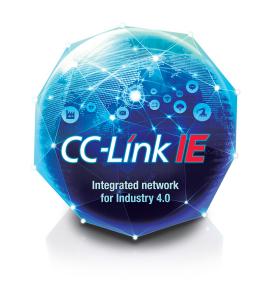The latest trends in Ethernet components
Automation network equipment manufacturers are readying their products for Industry 4.0 applications. In this way, they can support industries to build powerful and futureproof industrial communications infrastructures. The new features built into the latest network components give a clear picture of where factories are headed.
John Browett, General Manager at CLPA Europe, looks at the reasons behind the latest advances in industrial Ethernet devices.
The digital transformation is unleashing key technologies that are challenging industries worldwide. Vast volumes of data are being produced and shared like never before, as Big Data analytics and the Industrial Internet of Things (IIoT) are empowering companies in different sectors to gain unprecedented actionable insight into their processes, thus driving toward more efficient manufacturing.
Reliable communications networks are key to succeed in the implementation of Industry 4.0 and its component parts such as the IIoT. This includes all the components and communications nodes, that connect the entire factory.
How is the network infrastructure changing? What are the most noteworthy innovations and how are they shaping industrial communications and network protocols themselves?
Fieldbus to Ethernet
The most popular trend is clearly the move from traditional fieldbus to Ethernet technologies. Network equipment manufacturers are adapting to evolved customer preferences, as Industrial Ethernet is steadily becoming the standard for industrial communications networks.
The need for robustness and high performances in data transfer, as well the necessity to efficiently integrate factory installations’ operational technology (OT) and information technology (IT) systems are some of the main factors behind the technology shift.
While in 2017 industrial Ethernet overtook fieldbuses, with 52% of new installed nodes being Ethernet, the percentage of fieldbus nodes remains high, owning 42% of the market.1 Therefore, device manufacturers are promoting Ethernet but are continuing to support fieldbus technology users.
Open to talk
Producers of industrial communications equipment are not only focusing on existing Ethernet technologies and protocols, they are also driving their products towards openness and interoperability.
The current market for Ethernet solutions is slightly fragmented, as there is a plethora of industrial communications protocols available that cannot communicate with each other. This has become a burden to many users, as different protocols are adopted within a single factory. In fact, plants are rarely built at once with equipment from a single vendor. Also, the upgrade of some devices and machines contributes to the presence of different network protocols.
To address this issue and provide widely compatible products, Ethernet infrastructure manufacturers are developing compatibility solutions. A good example is the coupler series offered by Hilscher, a leading supplier of industrial communications products. The result is a device that allows a machine that operates on a network to be connected to another network as a conventional component.
More precisely, Hilscher’s NT 151-CCIE-RE coupler allows plant operators using CC-Link IE-networked machines, common in Asia, to map their data transparently in overlaying PROFINET networks, widely used in Europe, and vice versa.
Another interesting multi-protocol product is the R-IN32M3-CL IC developed by Renesas Electronics Corporation, a premier supplier of advanced semiconductor solutions. The device supports CC-Link IE Field, and other protocols.
A bandwidth larger than life
Renesas did not stop here: the company proceeded to embed a Gigabit Ethernet physical layer (PHY) into its R-IN32M4-CL2 industrial Ethernet communication IC. In this way, the integrated circuit can benefit from 1Gps bandwidths and provide high-speed communications.
This feature reiterates a fundamental requirement of Industry 4.0, network performance, and highlights another important trend in network components: the shift from 100Mbit Ethernet to fast Gigabit Ethernet networks, as network components are required to satisfy higher and higher bandwidth requirements to support data-intensive technologies.
Renesas is not the only manufacturer developing gigabit Ethernet products: leading manufacturers of industrial networking solutions, such as Moxa, HMS Anybus, Balluff and Harting, are providing a growing number of Gigabit Ethernet devices, such as switches, connectors and media converters. To do so, these companies are adopting CC-Link IE, currently the only open gigabit Ethernet network.
No device is left behind
In their transition towards Gigabit Ethernet, device makers are not abandoning older legacy 100Mbit systems that are still in operation. By utilising CC-Link IE Field Basic, a variant of CC-Link IE, 100Mbit compatibility can be added to existing products without any hardware modification. In fact, the network is easily implemented on devices or master controllers by software alone.
This is the reason why Hilscher equipped its popular netX platform with CC-Link IE Field Basic. NetX is a family of flexible network chip network controllers designed to provide a platform for device manufacturers to build a range of products with onboard networking capability for real-time Ethernet, as well as traditional fieldbuses. Users can add CC-Link IE Gigabit compatibility to existing products without any hardware modification, by simply using the netX software platform.
Network for futureproof communications infrastructures
Network component manufacturers are developing cutting-edge solutions that can address the challenges of Industry 4.0 and IIoT. Key elements include real-time transmission of data, interconnectedness between the factory floor and the enterprise level, plus the ability to communicate between networks with different protocols and bandwidths.
To succeed in this task, many of these devices are relying on CC-Link IE and its family of network solutions. These have been developed to provide an Ethernet network that is open, fast and interoperable. Currently, there are over 3,400 companies that are part of the CC-Link Partner Association (CLPA) and a huge catalogue of certified products available from over 300 manufacturers worldwide.
Also, end users are recognising the importance of high-quality advanced network solutions and equipment. With an installed base of over 22 million nodes, the CC-Link and CC-Link IE family is one of the most popular industrial networks globally.
1 Source: http://drivesncontrols.com/news/fullstory.php/aid/5653/Industrial_Ethernet_sales_overtook_fieldbus_in_2017.html
About The CC-Link Partner Association (CLPA)
The CLPA is an international organisation founded in 2000 dedicated to the technical development and promotion of the CC-Link family of open automation networks. The CLPA's key technology is CC-Link IE TSN, the world's first open industrial Ethernet to combine gigabit bandwidth with Time Sensitive Networking (TSN), making it the leading solution for Industry 4.0 applications. Currently the CLPA has over 3,800 member companies worldwide, and more than 2,000 compatible products available from over 300 manufacturers. Over 26 million devices using CLPA technology are in use worldwide.
Editorial contact:
DMA Europa Ltd: Chiara Civardi
Tel: +44 (0)1562 751436 Fax: +44 (0)1562 748315
Web: www.dmaeuropa.com Email: chiara@dmaeuropa.com
Company contact:
CLPA-Europe: John Browett
Tel: +44 (0) 7768 338708 Fax: +49 (0) 2102 532 9740
Web: eu.cc-link.org Email: john.browett@eu.cc-link.org


- CC-Link Partner Association (CLPA)
Members Site 







